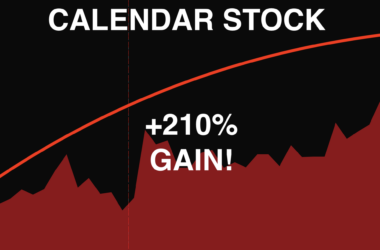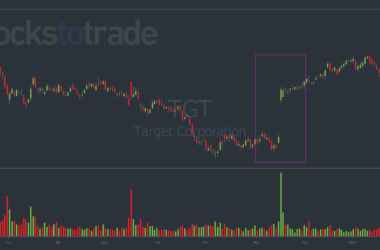
Good morning, traders…
Jeff here.
Options trading can be a lucrative gig, but it requires a certain kind of self-awareness…
To truly thrive, you need to take a step back and be honest with yourself about your trading.
By consistently assessing your trading habits, strategies, and outcomes … you can identify areas of strength and weakness, refine your approach, and continue to grow in your trading.
Take it from me…
When I was trading on Wall Street, my performance was evaluated on a monthly, weekly, and sometimes, even daily basis…
Hedge funds do this for a reason. They’re the best of the best, and they know how important performance evaluation truly is.
If you don’t periodically “look in the trading mirror,” so to speak, you risk making the same mistakes over and over again.
Like Ice Cube said, “You’ve gotta check yourself before you wreck yourself.”
However, if you notice a problem in your trading and nip your “Achilles’ heel” in the bud quickly, you could exponentially improve your overall strategy.
With that in mind, let me show you the five steps to self-evaluating your trading performance…
Step #1: Keep a Trading Journal
One of the foundational steps in self-evaluation is maintaining a comprehensive trading journal.
This journal should include:
- Date and time of trade
- Specific option contract (including underlying stock, strike price, expiration)
- Entry and exit prices
- Initial reasoning or strategy behind the trade
- Outcomes (profit or loss)
- Emotions or external factors affecting decision-making
Over time, this journal will become an invaluable tool for analyzing patterns, understanding recurring mistakes, and refining your approach.
Which setups are working for you? Do you have more success trading calls or puts, weekly or monthly contracts?
Keeping a trading journal is one of the best ways to answer all these questions about your performance.
Step #2: Quantitative Analysis
At the end of the day, finance is a numbers game. And so is a large part of your trading performance.
Reflecting on your quantitative performance is essential for an honest evaluation of how you’re fairing in the market.
If you aren’t already, start tracking the following metrics:
- Winrate: What percentage of your trades are profitable?
- Risk/Reward Ratio: How does your average win compare to your average loss?
- Return on Investment (ROI): Measure the percentage return based on the capital at risk for each trade.
- Drawdown: What’s the largest loss you’ve experienced, either in terms of a single trade or a series of trades?
These categories will give you a simple framework for assessing your trading skills and understanding where improvements might be necessary.
Step #3: Qualitative Analysis
Beyond the numbers, you should also assess the qualitative aspects of your trades.
These are the less easily definable parts of your performance — including your strategic and emotional discipline.
Think about the following:
- Strategy Adherence: Did you stick to your trading plan or diverge from it? If you diverged, why, and what was the outcome?
- Emotional Factors: Were any trades influenced by fear, greed, or other emotions? (Recognizing the emotional aspects of trading can help you develop better discipline.)
- Market Assessment: Did you correctly assess the market conditions, or were there elements you overlooked? Understanding market misjudgments can help you improve your performance moving forward.
Step #4: Peer Review
For the most part, trading is an individual sport.
You sit by yourself in a room full of screens, waiting for that perfect opportunity to strike.
And while being self-sufficient is a great skill in the market…
Eventually, every trader needs some help and support.
Peer reviewing your recent trades with a trusted trading partner (or mentor) can give you a fresh insight into your performance.
It’s always good to have a second opinion.
Sharing select trades, strategies, and outcomes can lead to constructive feedback. Your friends might spot mistakes that you completely overlooked.
An outside perspective is often less biased and can offer a fresh viewpoint on your trading habits.
5. Identify (and Learn from) Your Mistakes
Effective self-evaluation is not just about identifying what went wrong, but also understanding why and how to improve.
Every trader, no matter how gifted or experienced, will eventually make mistakes and take losses.
How you react to these mistakes and losses is critical.
The 90% of traders who fail in the stock market tend to let their losses shatter their confidence. And this is where they go wrong…
Instead of viewing these moments negatively, embrace them as opportunities to learn and grow.
In fact, a painful loss can actually be a gift. The pain of losing can force you to be honest about certain ‘leaks’ in your strategy.
Here’s what you do:
Analyze each mistake to understand its root cause, then figure out how to prevent similar errors in the future.
This knowledge will not only influence your trades but also provide context when evaluating your performance.
If you don’t periodically step back and self-evaluate, you’ll inevitably miss out on opportunities to identify mistakes and improve upon them.
Worse, you’ll keep making the mistakes, and maybe even blow your account up in the process.
Don’t fall into this trap. Take a few hours each week to self-evaluate and you’ll be a better trader for it.
Happy trading,
Jeff Zananiri
P.S. With the recent market volatility, many traders are all but guaranteed to lose money…
But by following my unique method for finding trade ideas, savvy traders now have the chance to witness double and even triple-digit gains like:
+69% on BKR in 1 Month
+85% on ORCL in 1 Month
+153% on Meta in 1 Month
+210% on WKHS in 1 Month
+423% on COG in 1 Month
(Just to name a few…)*
Having this edge helped me take $5.1 million in seed capital … and grow it to over $700 million in total profits — a 13,625% growth without losing a single quarter.*
Discover the key behind my “Calendar Stocks” edge in the markets — CLICK HERE TO GET ACCESS NOW.
*Past performance does not indicate future results



